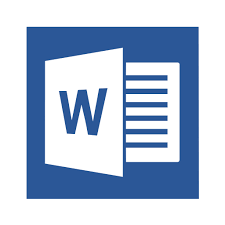The Determinant Analysis of the Utilization of Google Classroom as the E-Learning Facility in Yogyakarta Nahdlatul Ulama University
Abstract
Purpose: to find out what factors cause lecturers and students to adopt and refuse to adopt Google Classroom as a means of E-Learning at the Yogyakarta Nahdlatul Ulama University.
Design/methodology/approach: This research was conducted using a qualitative approach to get the meaning of a phenomenon. The Innovation Diffusion Theory is used as the basis for this research to find out how the role of Google Classroom as a means of E-Learning and how the suitability of Google Classroom as a means of E-Learning at Nahdlatul Ulama University Yogyakarta.
Findings/result: the factors of adoption consisted of synchronizing the students and lecturers’ email with Google, integrating other Google features, making an efficiency of fund, time and place, finding an alternative way for e-learning, evaluating the facilities, filling the teaching and learning process, communicating between the lecturers and students, and knowing the lateness of submitting assignment. Besides, there were some factors of rejection such as the limited ownership of electronic media, limited knowledge, Internet connection, and no attendance facility
Originality/value/state of the art: The factors of lecturers and students are adopt and refuse to adopt Google Classroom as a means of E-Learning at Nahdlatul Ulama University Yogyakarta.
Keywords
Full Text:
PDFReferences
Anggraini, S. (2016) ‘Budaya Literasi Dalam Komunikasi’, Wacana, XV(3), pp. 181–279. Available at: http://journal.moestopo.ac.id/index.php/wacana/article/viewFile/51/29.
Firdaus, A. (2012) Studi Kualitatif Implementasi Free Open Source Software pada Institusi/Perusahaan di Sektor Publik dan Swasta dengan Menggunakan Teori Difusi Inovasi. Indonesian Islamic University.
Gunawan, F. I. and Sunarman, S. G. (2017) ‘Pengembangan Kelas Virtual Dengan Google Classroom Dalam Keterampilan Pemecahan Masalah (Problem Solving) Topik Vektor Pada Siswa Smk Untuk Mendukung Pembelajaran’, in Prosiding Seminar Nasional Etnomatnesia, pp. 340–348.
Hakim, A. B. (2016) ‘Efektifitas Penggunaan E-Learning Moodle , Google Classroom Dan Edmodo’, 2, pp. 1–6.
Hapsari, S. A. and Pamungkas, H. (2019) ‘Pemanfaatan Google Classroom Sebagai Media Pembelajaran Online Di Universitas Dian Nuswantoro’, WACANA: Jurnal Ilmiah Ilmu Komunikasi, 18(2). doi: 10.32509/wacana.v18i2.924.
Hardiyana, A. (SMAN 1 L. (2015) Implementasi Google Classroom sebagai Alternatif dalam Meningkatkan Mutu Pembelajaran di Sekolah, Karya Tulis Ilmiah. Cirebon.
Iftakhar, S. (2016) ‘Google classroom: what works and how?’, Journal of Education and Social Sciences, 3, pp. 12–18.
M. Djamal (2015) Paradigma Penelitian Kualitatif. Yogyakarta: Pustaka Pelajar.
Rachmadyanti, V. D. W. P. (2017) ‘Pembelajaran blended learning melalui google classroom di sekolah dasar’, in. Prosiding Seminar Nasional Pendidikan PGSD UMS & HDPGSDI Wilayah Jawa, pp. 513–521.
Reginasari, A. and Annisa, V. (2019) ‘Menggali Pengalaman Menggunakan Teknologi Berbasis Internet Dalam Mempersiapkan Indonesia Menuju Industri 4.0’, Jurnal Penelitian Kebijakan Pendidikan, 11(3), pp. 183–196. doi: 10.24832/jpkp.v11i3.211.
Rozak, A. and Albantani, A. M. (2018) ‘DESAIN PERKULIAHAN BAHASA ARAB MELALUI GOOGLE CLASSROOM’, 5(1), pp. 83–102.
Sabran and Sabara, E. (2019) ‘Keefektifan Google Classroom sebagai media pembelajaran’, PROSIDING SEMINAR NASIONAL LEMBAGA PENELITIAN UNIVERSITAS NEGERI Makasar, pp. 122–125. Available at: https://webcache.googleusercontent.com/search?q=cache:SS_jKM_r2TAJ:https://ojs.unm.ac.id/semnaslemlit/article/download/8256/4767+&cd=2&hl=id&ct=clnk&gl=id.
Silahuddin, S. (2015) ‘Penerapan E-Learning dalam Inovasi Pendidikan’, CIRCUIT: Jurnal Ilmiah Pendidikan Teknik Elektro, 1(1), pp. 48–59. doi: 10.22373/crc.v1i1.310.
Stanley J. Baran (2011) Pengantar Komunikasi Massa. 5th edn. Jakarta: Salemba Empat.
Sutrisna, D. (2018) ‘Meningkatkan Kemampuan Literasi Mahasiswa Menggunakan Google Classroom’, FON : Jurnal Pendidikan Bahasa dan Sastra Indonesia, 13(2), pp. 69–78. doi: 10.25134/fjpbsi.v13i2.1544.
DOI: https://doi.org/10.31315/telematika.v18i1.3968
DOI (PDF): https://doi.org/10.31315/telematika.v18i1.3968.g3341
Refbacks
- There are currently no refbacks.

This work is licensed under a Creative Commons Attribution-NonCommercial-ShareAlike 4.0 International License.
Status Kunjungan Jurnal Telematika

